Lima: An Eclectic Latin American Metropolis
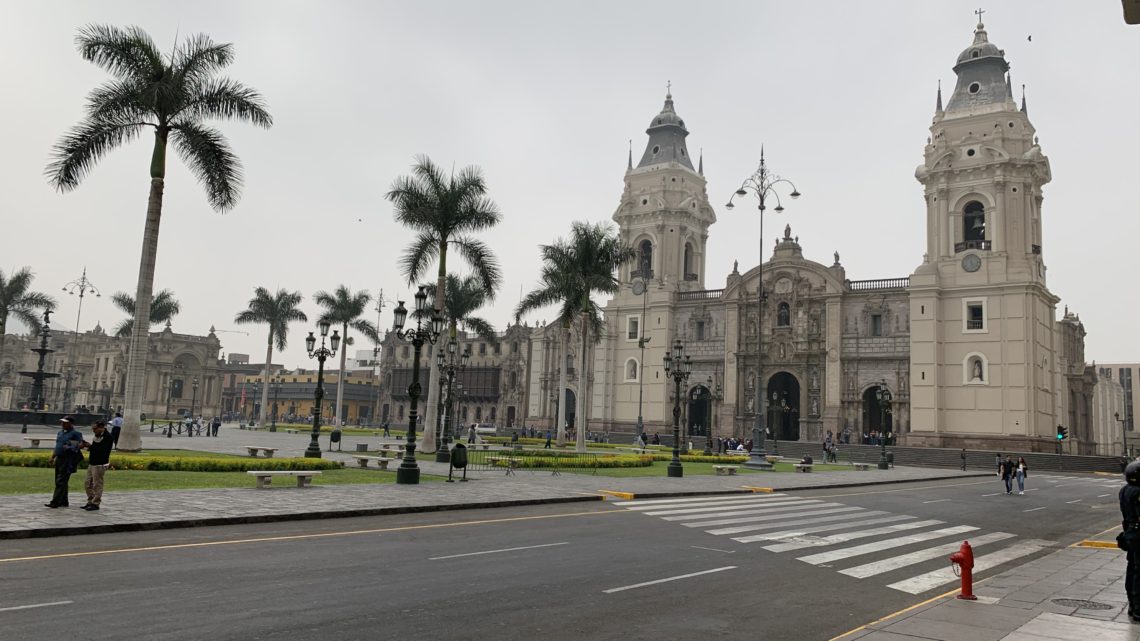
Throughout my previous travels, I had visited 23 countries across three continents. I had been all over parts of North America, Western Europe, and even East Asia. Despite all this traveling, I had never made it to South America or even the Southern Hemisphere. I aimed to change that with my next trip to Peru! It is only a 6-hour flight from Miami, so I knew I wanted to make this trip happen while I was still in Florida.
I had always been drawn to Peru for its beautiful landscapes, unique architecture, and the allure of Machu Picchu. After my sister visited in October 2015 and talked about how amazing it was, I was fully sold on this being my first trip to South America.
On April 26th, 2019, I headed up to Fort Lauderdale airport to catch a flight to Peru’s capital city: Lima. Although most of the sites I wanted to visit were in the Cusco Region, I needed to enter the country through Lima Airport before I could fly to Cusco. Therefore, I allotted myself a day to explore this vibrant capital city before heading into the Andes.
After landing at around 10:00 p.m., I immediately headed for the Airport Express: a quick, convenient, and safe bus service that dropped me off near my hostel in Miraflores. I arrived there to
Miraflores
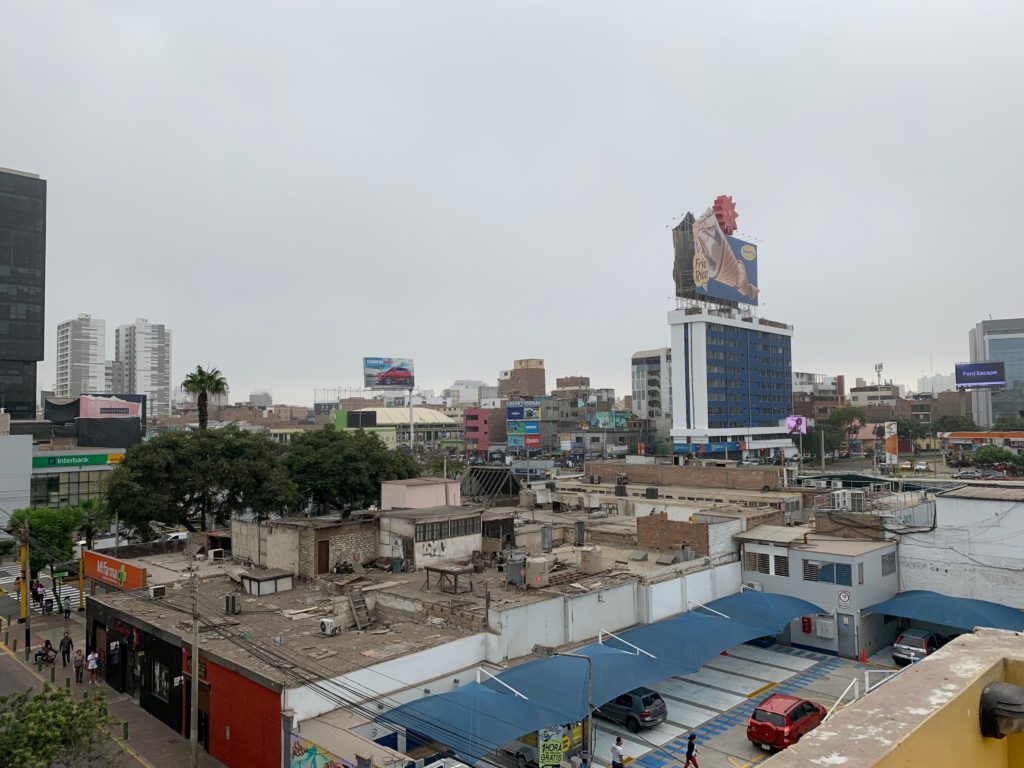
I woke up the following morning to a panoramic view of Miraflores from my hostel’s rooftop terrace. This affluent neighborhood is filled with residential skyscrapers, hotels, restaurants, and nightclubs. As a result, it is the most popular part of the city for tourists. Although the majority of the buildings are unattractive and blocky, this neighborhood was a great home base for visiting Lima’s more historic districts.
After a quick breakfast, I hopped in an Uber towards the Historic Centre of Lima. With a population of 8.8 million, Lima is a dense city, much like New York. This was especially evident on the ride over, where we hit plenty of traffic and a fair share of aggressive drivers. About 30 minutes later, I got dropped off right near the Plaza de Armas.
Historic Centre of Lima
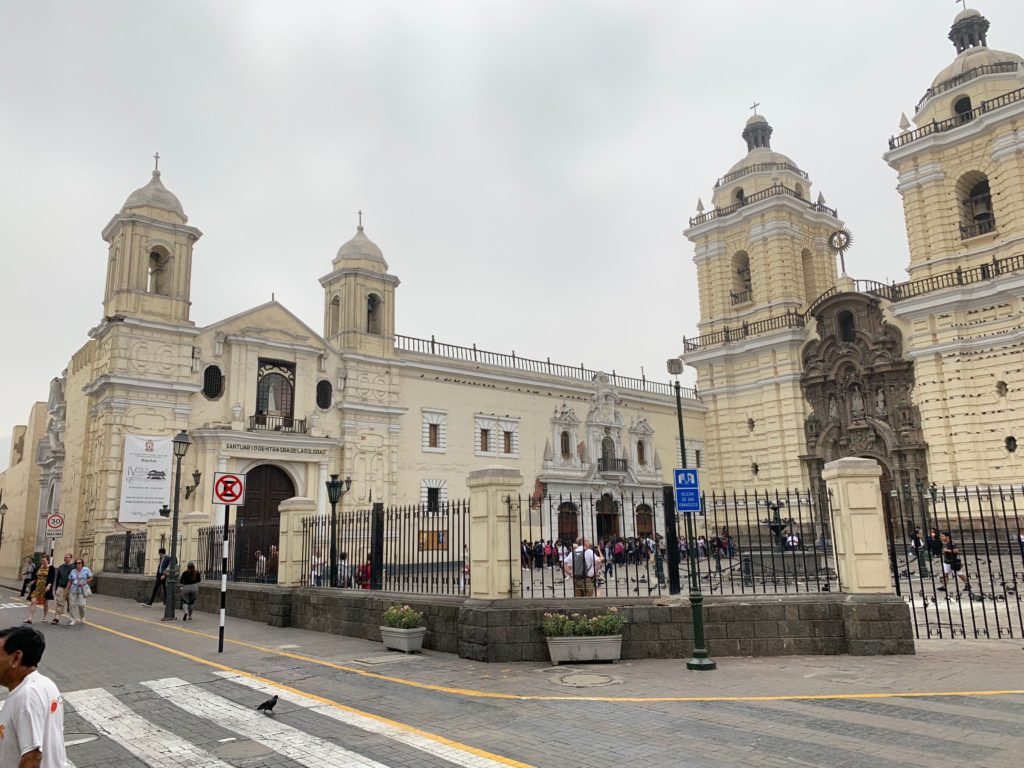
I knew I was in the Historic Centre when I saw all the European inspired architecture around me. Just outside the main plaza, I passed by the Basílica y Convento de San Francisco, a 17th-century church and monastery. This building is a fine example of Spanish Baroque architecture, featuring a delicately carved front façade and two bell towers.
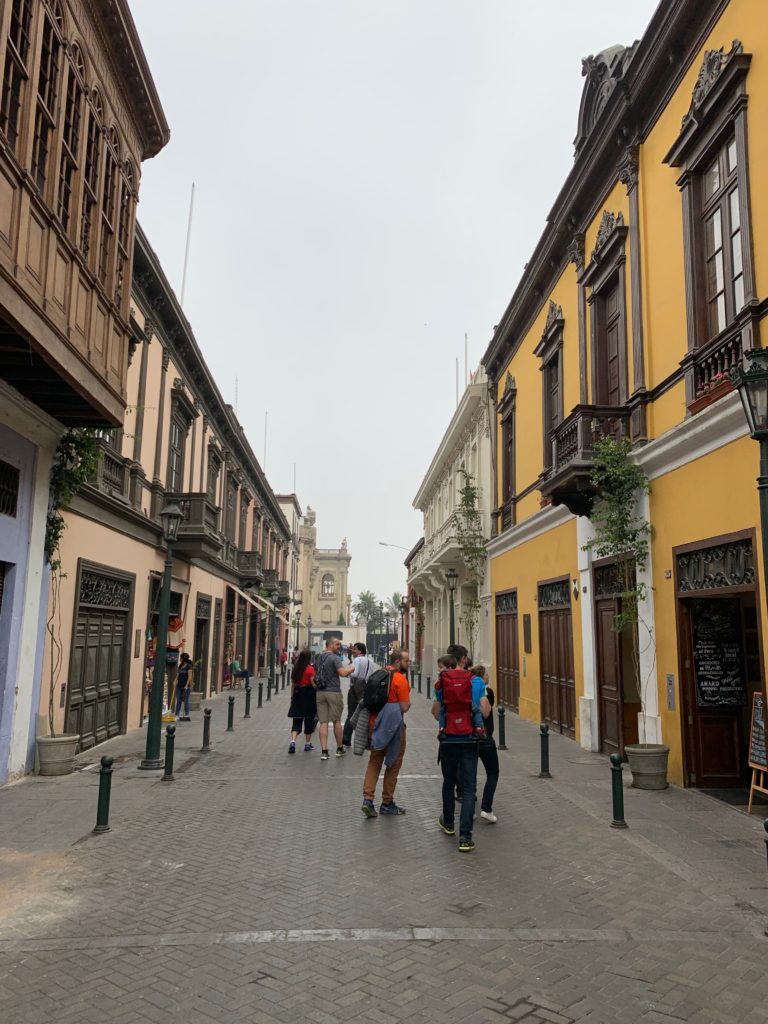
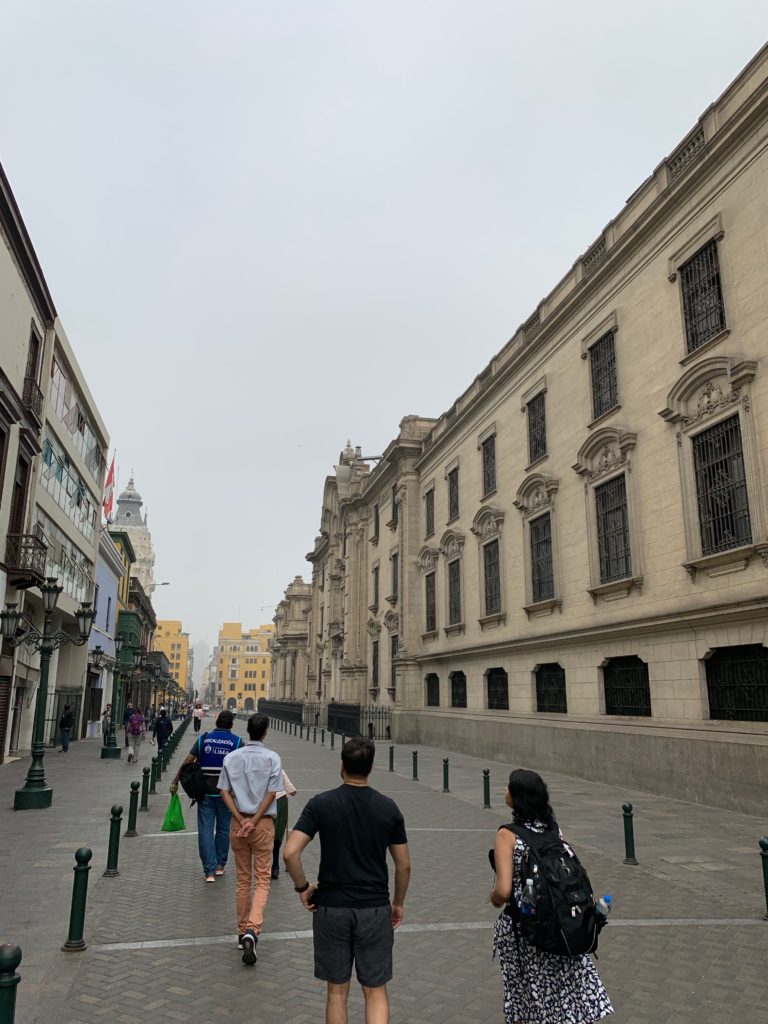
The narrow streets of this district are lined with an eclectic mix of European and Colonial-style buildings, dating back to the Spanish Kingdom of Peru. Some of them are built entirely of stone, with a slight touch of Baroque-inspired ornamentation. Others feature bright-colored stucco façades with dramatic dark wooden elements. The building style is clearly Spanish-influenced, yet uniquely Latin American at the same time.
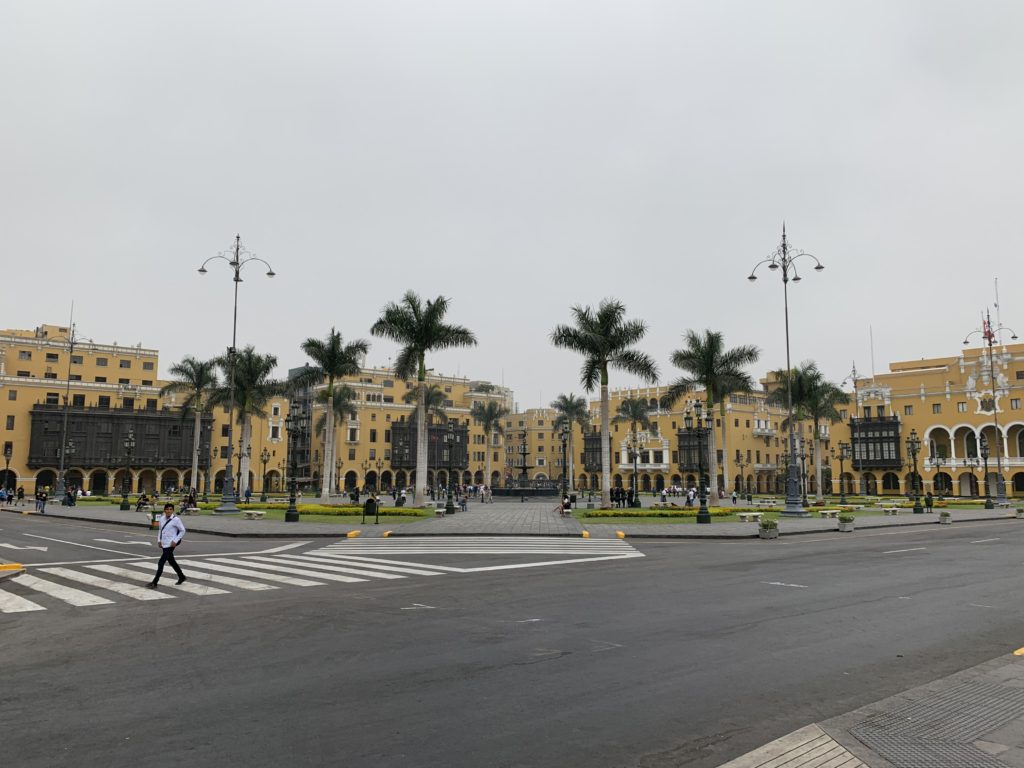
I eventually arrived at the district’s most famous square: the Plaza de Armas. This area is home to government palaces and the magnificent Cathedral of Lima. Due to a recent demonstration, the square was closed to the public when I visited. However, I could still admire the colorful architecture from afar. The yellow buildings opened in the 20th-century to replace older ones that were destroyed by earthquakes. Although they are minimalist, with wide arches and subtle ornamentation, they still retain Colonial-style wooden balconies.
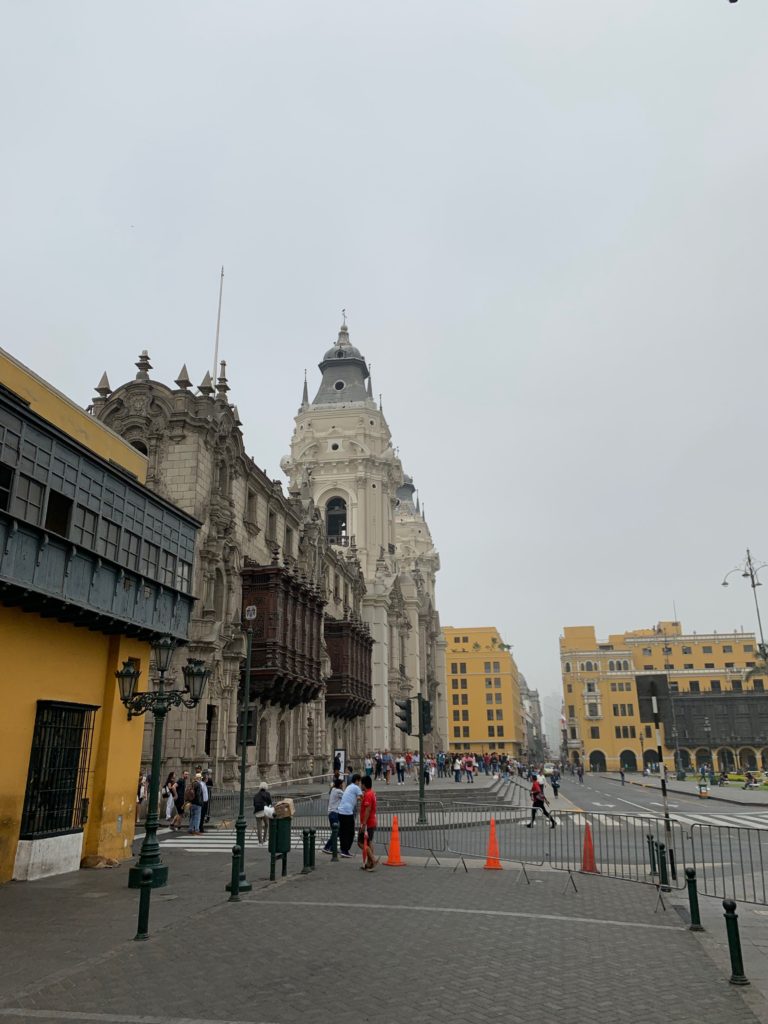
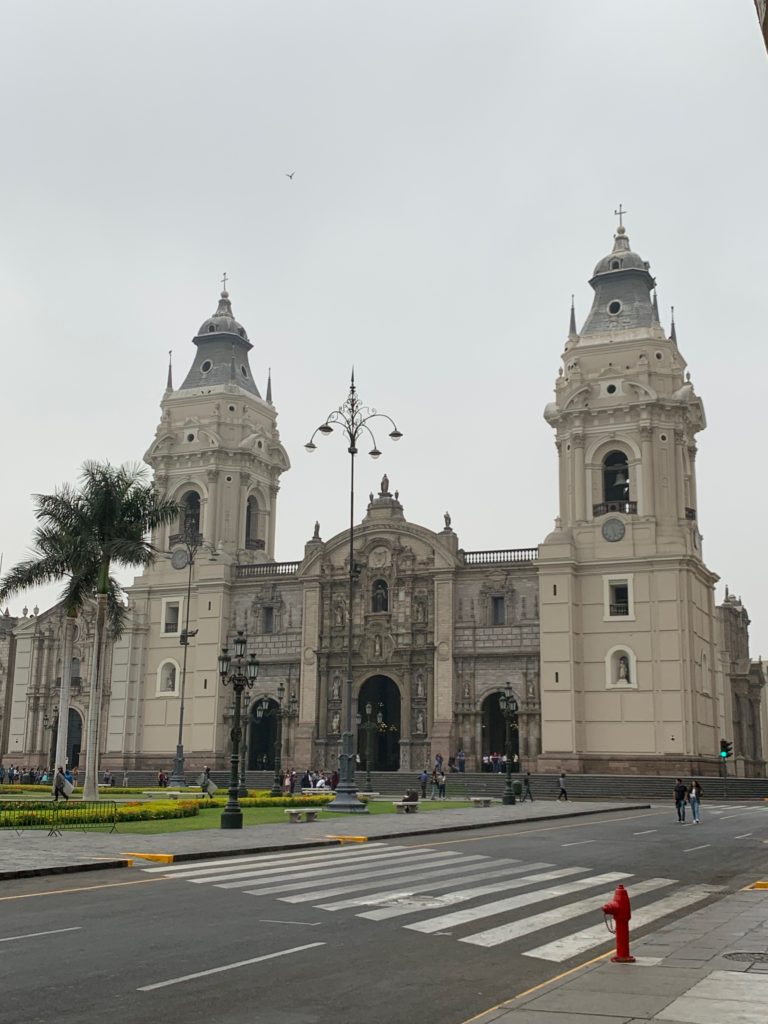
On the other side of the plaza, I could see the Cathedral of Lima: a grand church that highlights a variety of European-influenced architectural styles. The original building was finished in 1649 but has been altered multiple times. The stone façade features rich ornamentation, along with two bell towers and three large doorways. Although architecturally, the building is Baroque and Neoclassical, the church still retains its Colonial structure.
Barranco District
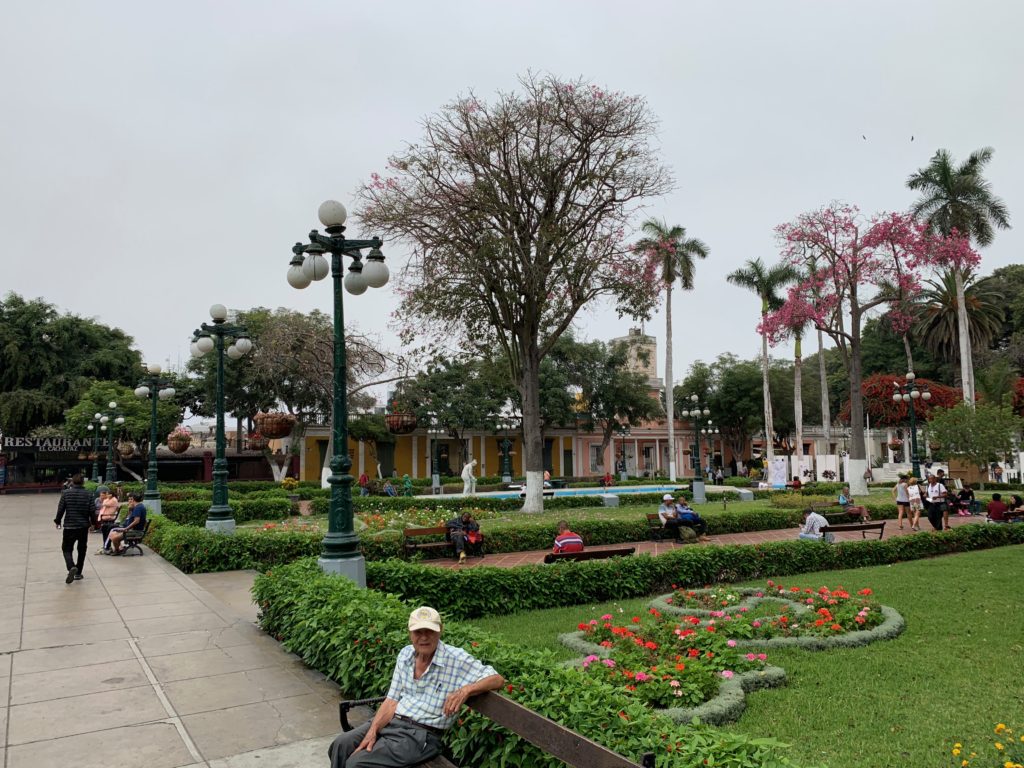
Although originally, I was going to head back to Miraflores after exploring Lima’s Historic Centre, my coworker recommended that I check out Barranco. I decided to take her advice and thus called an Uber to this colorful neighborhood. I was dropped off right near the district’s municipal park.
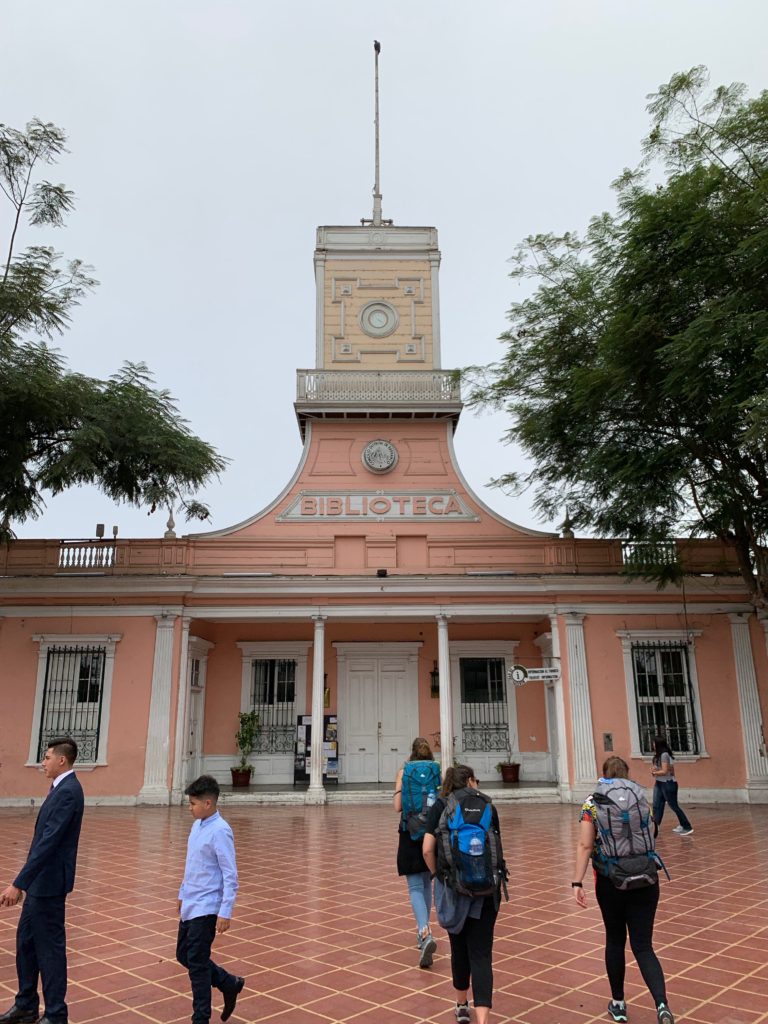
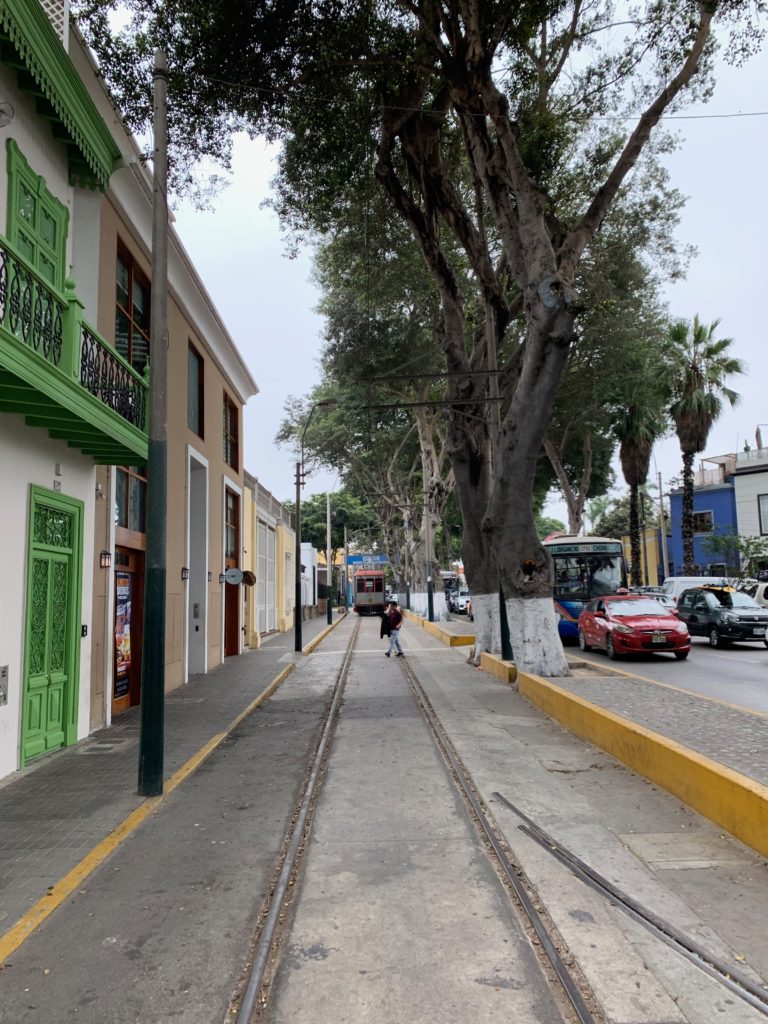
The neighborhood is filled with playful buildings, as this is one of the most artistic areas of the city. The Colonial-style library, in particular, stands out with its bright pink façade and whimsical clock tower. Right beside the library, I sat down for my first meal in Peru. The food throughout the country is both delicious and inexpensive. I was able to order a
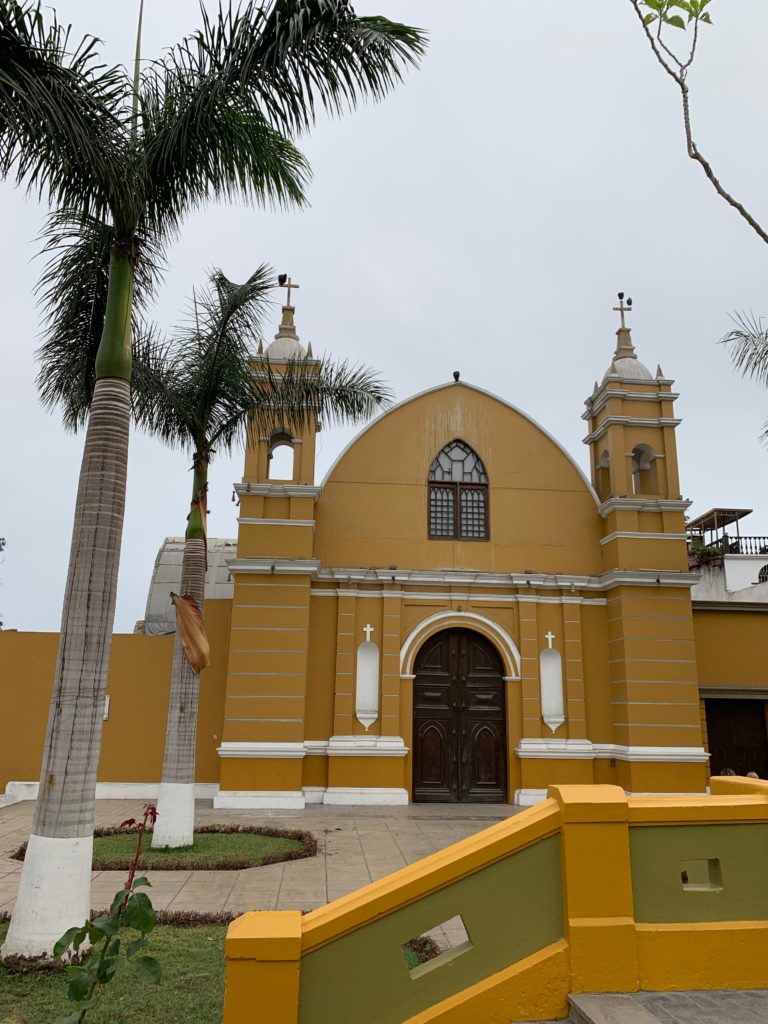
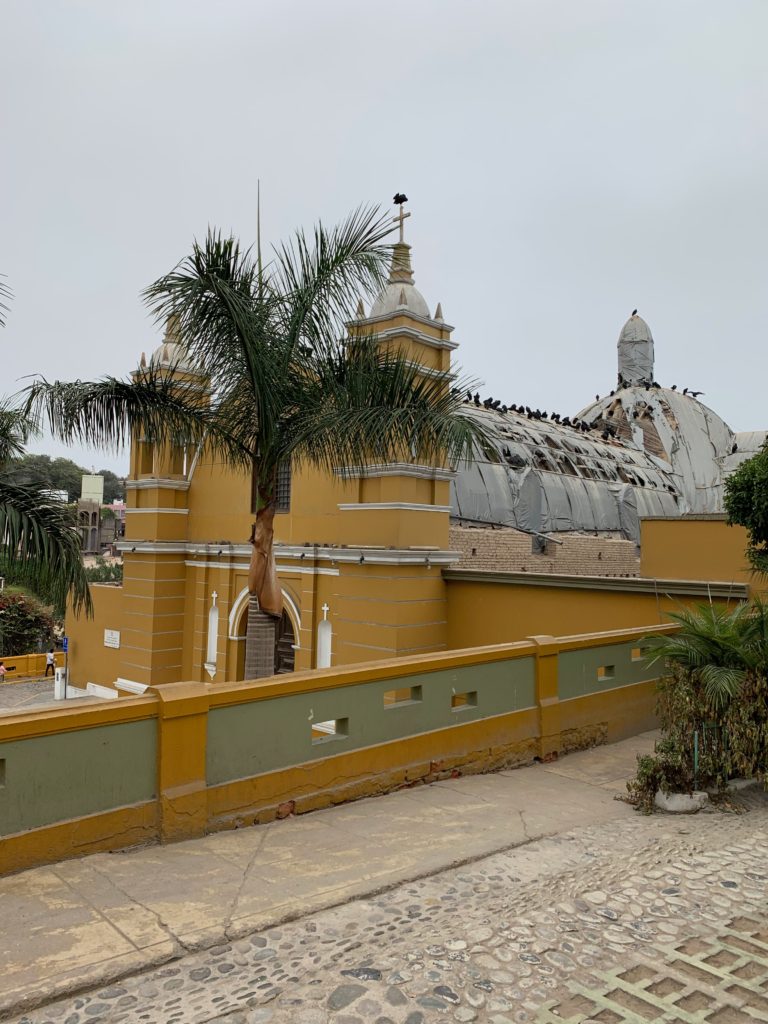
After lunch, I continued exploring this colorful district, crossing bridges and passing by beautiful gardens. I stopped outside a small church: Iglesia La Ermita. This bright yellow building has a mix of Gothic and Colonial architecture, with a pointed barrel-vaulted ceiling and two small bell towers. Unfortunately, the building has fallen into disrepair, and despite the beautiful front façade, the roof is crumbling.
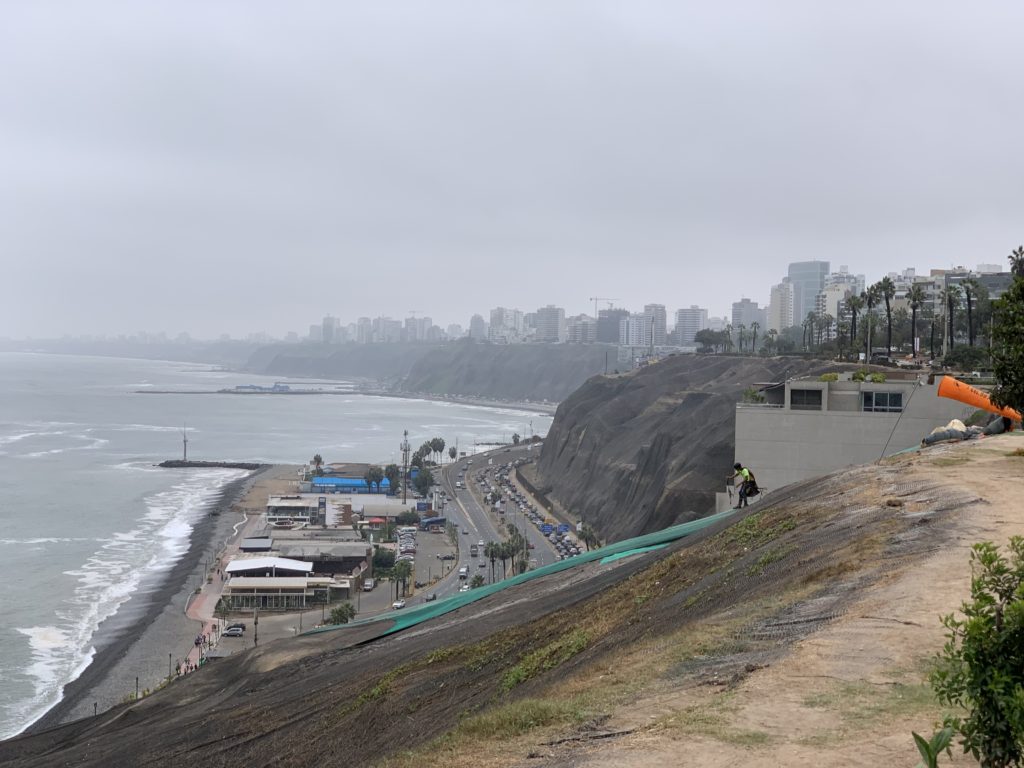
I followed a road that eventually reached Lima’s dramatic shoreline. From here, I could see the skyscrapers of Miraflores standing tall above the rugged cliffs. Lima is located on the Pacific Ocean, and this was my first time back on the west coast of the Americas since my trip to California in 2008. From here, I called my ride back to Miraflores to visit one more attraction before heading back to the airport.
Parque del Amor
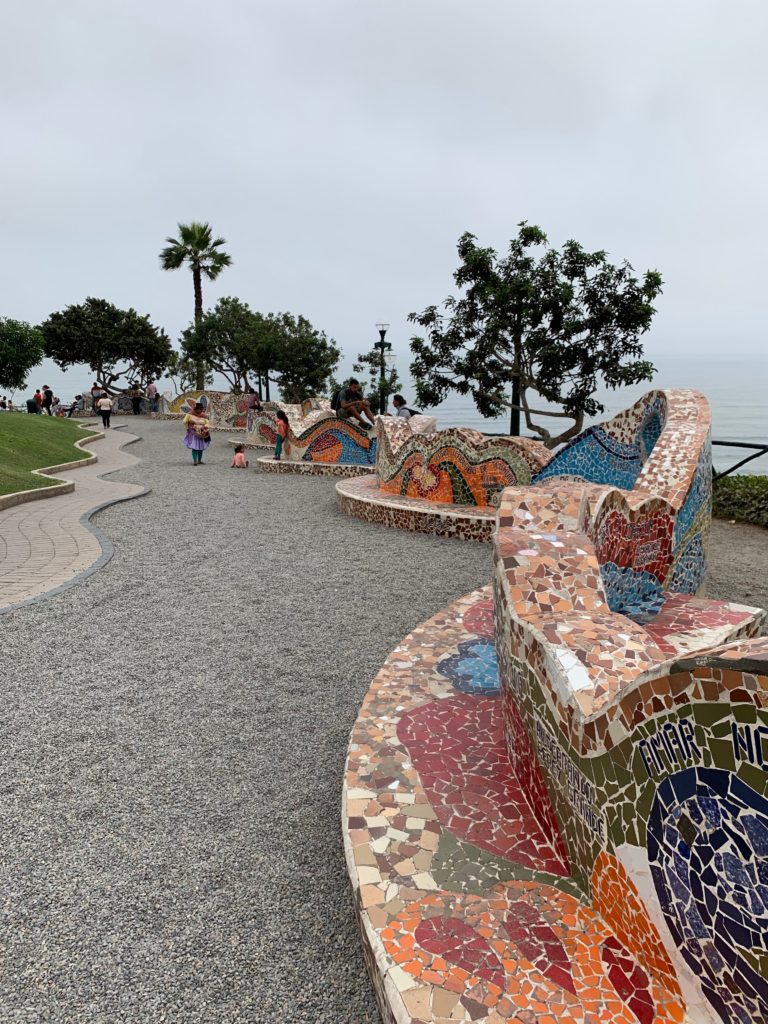
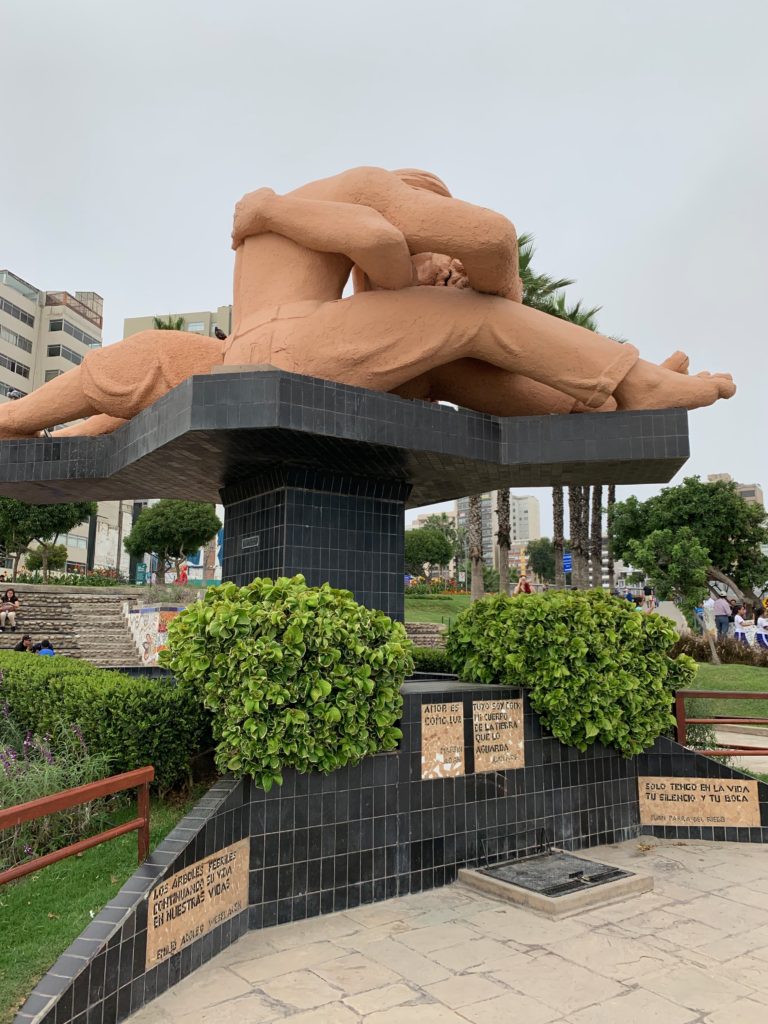
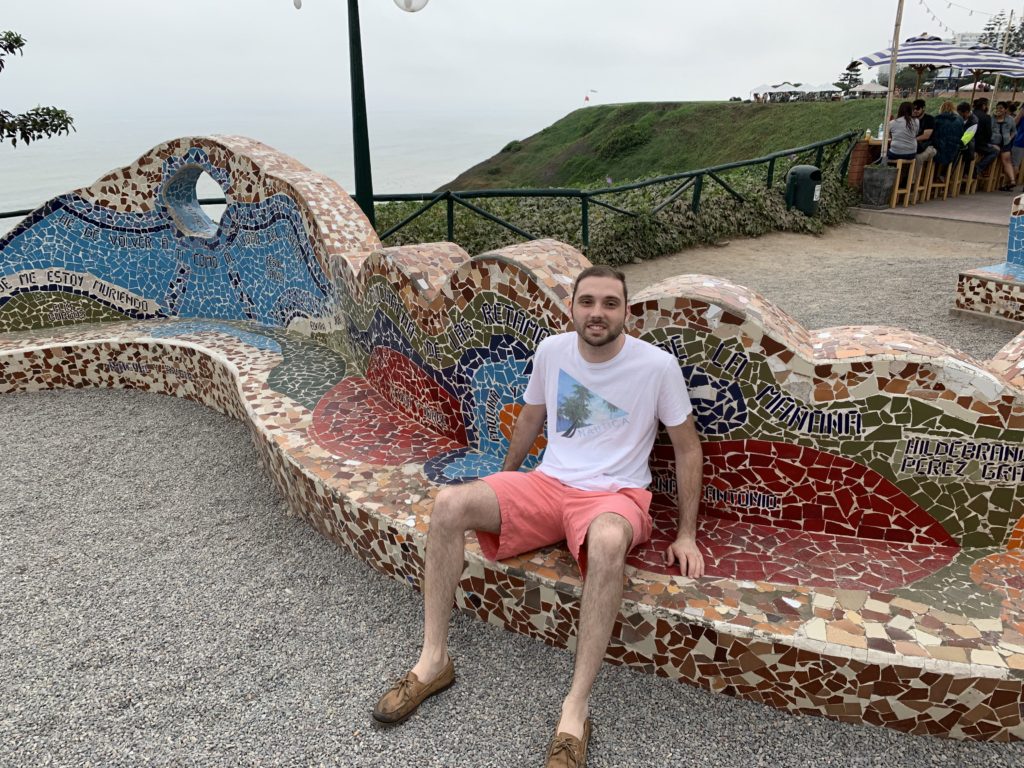
I got dropped off at the Parque del Amor along the coast. With its colorful mosaic benches, the park has a striking resemblance to Gaudí’s Park Güell in Barcelona. However, the mosaics here use cooler colors, and the benches have a wavier design than those in Barcelona. The park was built to celebrate love, and thus features a central sculpture called “El Beso” (The Kiss.)
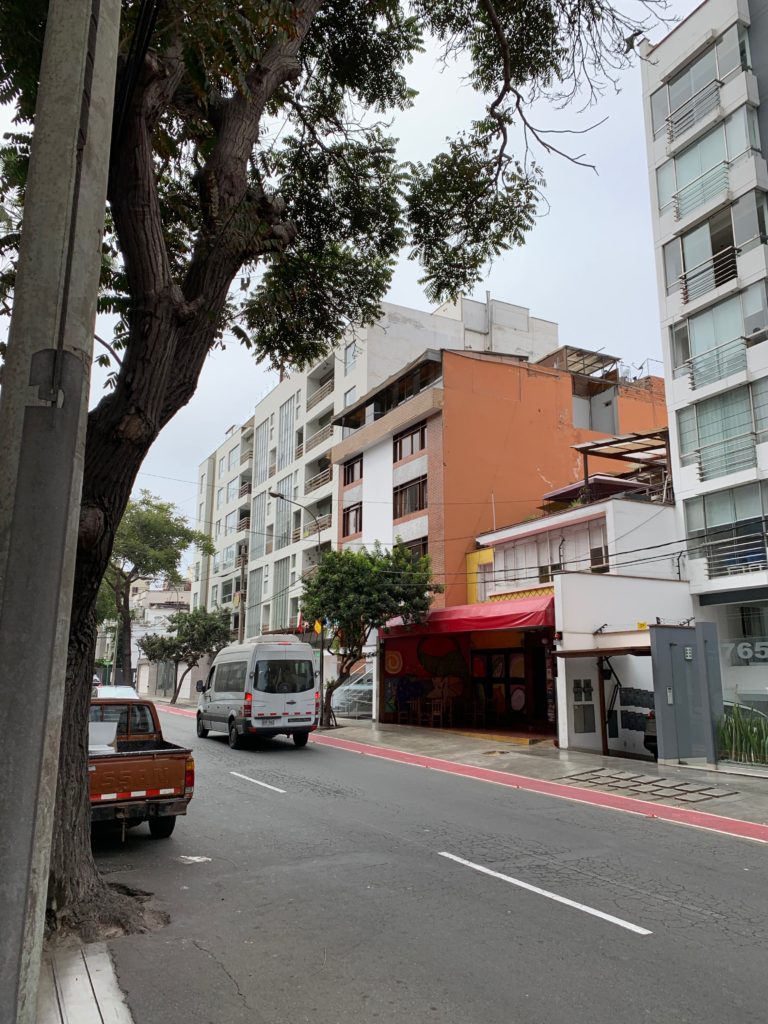
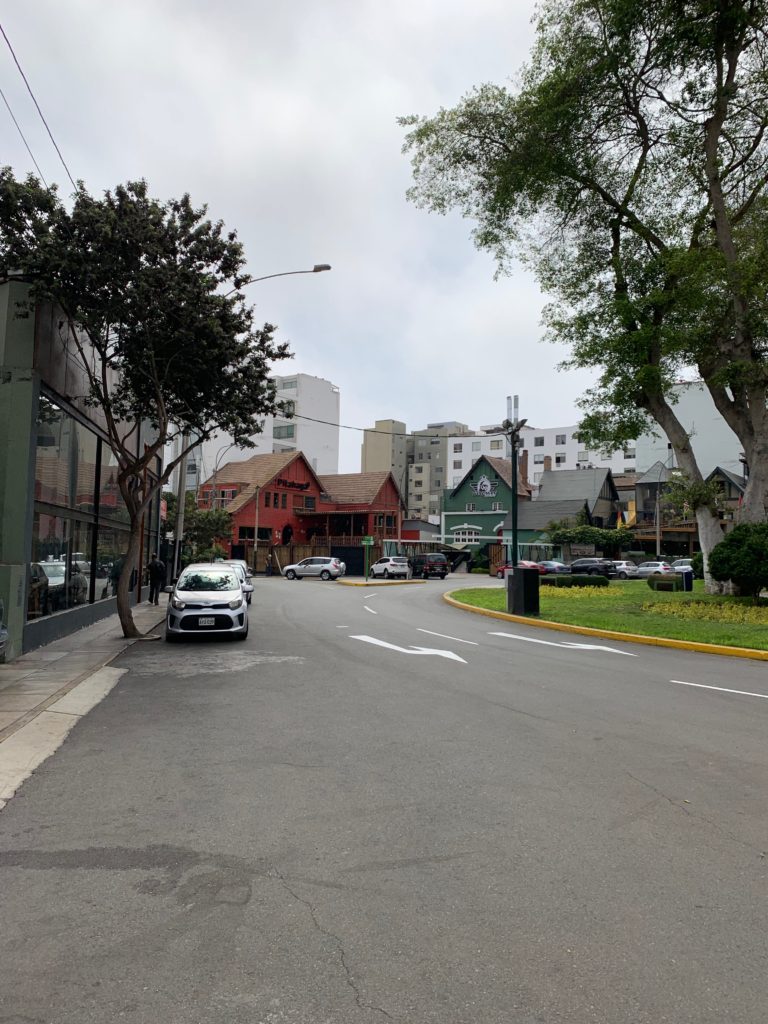
While it wasn’t the main focus of my trip, I thoroughly enjoyed exploring Lima’s eclectic neighborhoods and historical sights. I would have certainly explored more if I had the time. By mid-afternoon, I began my walk back to my hostel through Miraflores. From there, I got on the Airport Express towards Lima Airport, where I got on my flight bound for Cusco: the gateway to the Sacred Valley and Machu Picchu.
